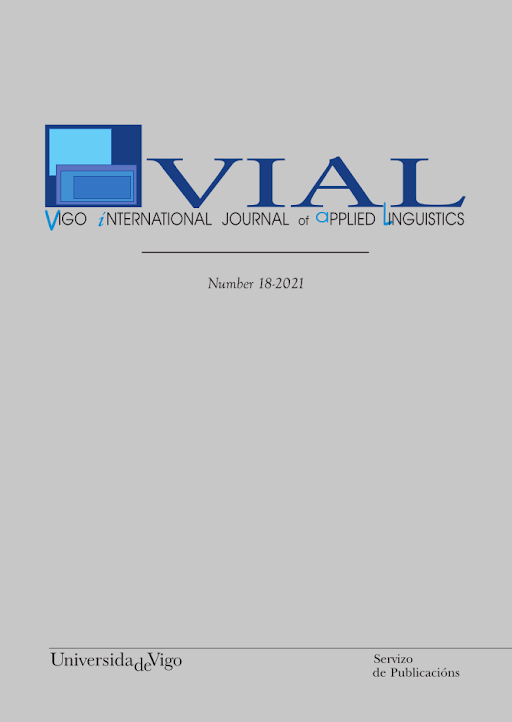Teachers’ oral corrective feedback and learners’ uptake in high school CLIL and EFL classrooms
DOI:
https://doi.org/10.35869/vial.v0i18.3368Keywords:
Oral corrective feedback, corrective feedback episodes, EFL, CLIL, learning contextAbstract
Oral corrective feedback (OCF) has been reported to be affected by several factors such as learners’ age, level of proficiency or the OCF types provided by the teacher. However, little research has been carried out on the variable learning context, even though OCF and uptake vary in rates and types in second language (SL) and foreign language (FL) settings. Moreover, OCF has been clearly under-researched in classrooms that follow a content and language integrated learning (CLIL) approach. As CLIL programs are being widely implemented mainly in European settings and differences in context characteristics suggest variations in OCF and learners’ uptake, the present study aimed to compare the recorded classroom interaction data (22 hours 43 minutes) from an intact class of learners (N=26) in their last year of secondary education (age 17-18), attending the lessons of an English as a FL (EFL) teacher and a Business Studies (CLIL) teacher. Findings show significant differences as to the proportion and OCF types used, as well as different learners’ behavior regarding the rates of uptake and repair and the uptake after the use of recasts. Pedagogical implications are offered as to how to maximize the potential benefits of OCF in FL classrooms.
Downloads
Downloads
Published
Issue
Section
License
Revistas_UVigo es el portal de publicación en acceso abierto de las revistas de la Universidade de Vigo. La puesta a disposición y comunicación pública de las obras en el portal se efectúa bajo licencias Creative Commons (CC).
Para cuestiones de responsabilidades, propiedad intelectual y protección de datos consulte el aviso legal de la Universidade de Vigo.



